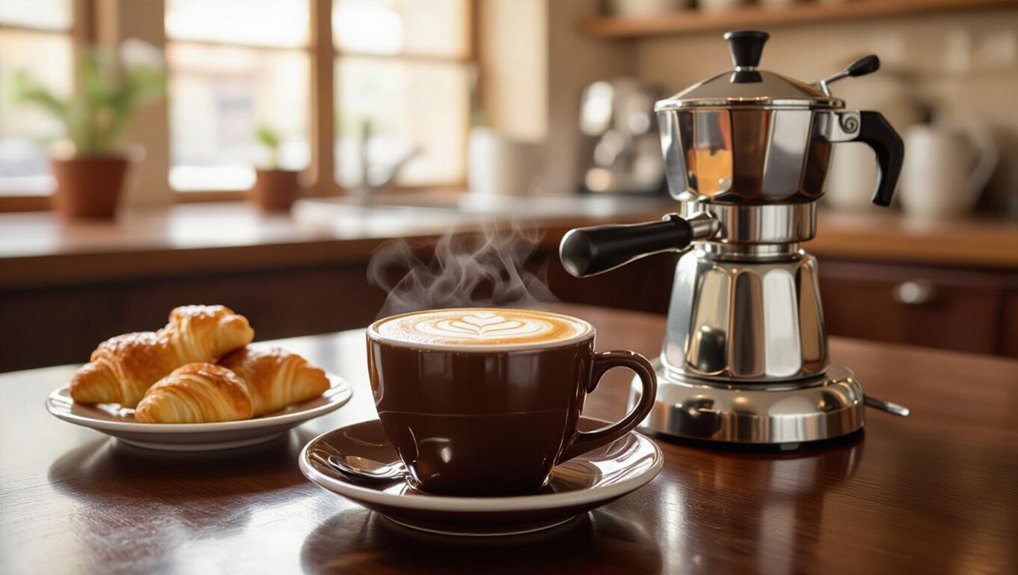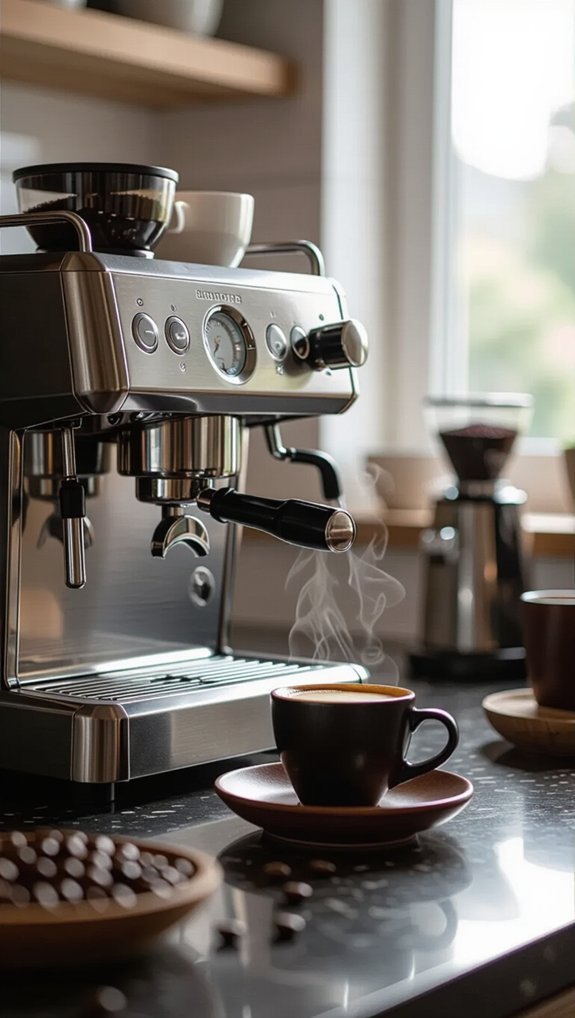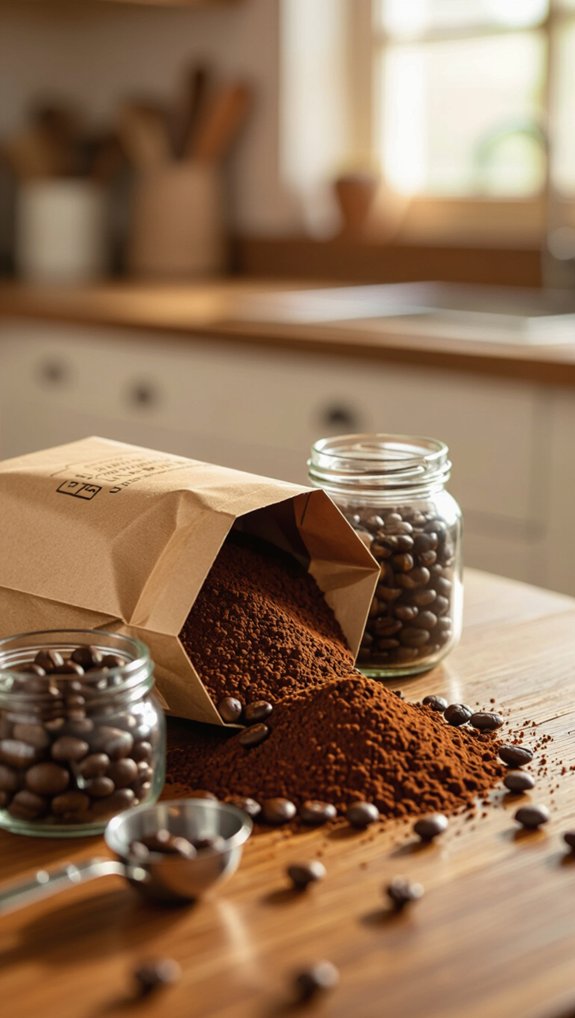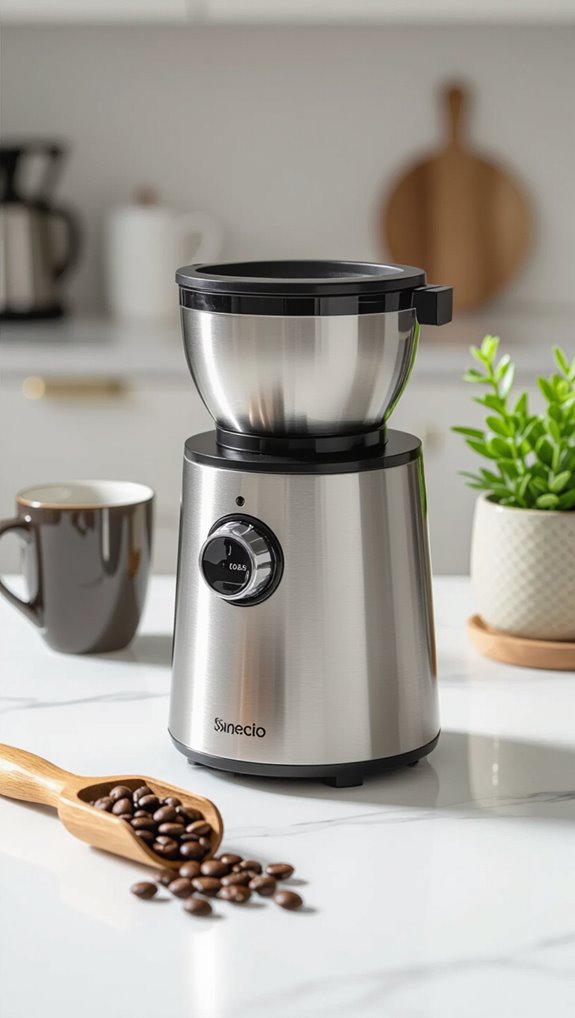If you’ve ever stood in a café wondering what exactly café con leche is and how it differs from a regular latte, you’re not alone. This beloved Latin American coffee drink has a rich cultural heritage that goes far beyond its simple name, which literally translates to “coffee with milk.” Many coffee lovers find themselves curious about this traditional beverage but unsure of its origins, preparation methods, and what makes it truly authentic.
In this post, you’ll discover the fascinating history behind café con leche and learn why it holds such an important place in Latin American culture. We’ll walk through the traditional preparation techniques that create its distinctive taste and texture, explore regional variations across different countries, and provide you with step-by-step instructions to make an authentic café con leche at home.
Whether you’re looking to expand your coffee knowledge or want to master this comforting drink for your morning routine, you’ll have all the tools and understanding needed to appreciate and create this timeless beverage.
Table of Contents
Origin and Cultural Roots

Although café con leche might seem like a simple coffee drink, its roots run deep in the rich cultural tapestry of Spain and Latin America. This traditional Spanish beverage emerged from centuries of coffee culture, spreading through Spanish-speaking communities with remarkable ease.
The Cuban version, particularly popular in regions like South Florida, has become a beloved morning ritual. You’ll find café con leche represents more than just a drink—it’s a cultural connection, a morning tradition that bridges generations.
Its preparation reflects the warmth and hospitality of the regions where it’s cherished, combining espresso and steamed milk in a delightful harmony.
Essential Ingredients

If you’re ready to craft an authentic café con leche, grasping its essential ingredients is your first step toward coffee perfection. The key players are freshly ground espresso roast and whole dairy milk, creating a rich, creamy base.
In the Cuban version, you’ll often find sugar added during milk heating, balancing the coffee’s intense flavor. While traditionalists swear by whole milk for its luxurious texture, you can experiment with alternative milks to suit your taste.
Aim for a strong espresso brew using a 1:10 coffee-to-water ratio, and don’t shy away from exploring single-origin beans from Brazil, Peru, or Colombia for a unique twist.
Traditional Brewing Methods

Three classic brewing methods define the art of crafting an authentic café con leche, each rooted in rich cultural traditions.
The moka pot stands out as a beloved traditional brewing method, creating a concentrated espresso base that forms the drink’s foundation. Cuban versions often incorporate added sugar, while Spanish techniques focus on precise milk heating around 82°C.
I’ll typically use a stovetop espresso maker to extract a robust coffee, then carefully blend it with heated milk in a perfect 1:1 ratio. This approach ensures a creamy, flavorful experience that captures the essence of this beloved coffee beverage.
Regional Variations

When exploring café con leche, you’ll discover a fascinating world of regional interpretations that reflect local coffee cultures and culinary traditions.
Cuban versions boast a concentrated espresso base, often sweetened and mixed with a generous milk ratio, creating a rich, creamy experience.
Puerto Rican styles might add sugar during preparation, highlighting local preferences.
In Spain, the drink emphasizes strong coffee served in a glass, while Mexican variations like café de olla blend espresso with hot chocolate.
Each region’s unique approach transforms this simple beverage into a cultural expression of coffee craftsmanship.
Serving and Presentation

Regional coffee traditions seamlessly flow into the art of serving café con leche, where presentation becomes a sensory experience that celebrates the beverage’s cultural roots.
In the Spanish version, you’ll typically find this drink served in a clear glass, revealing its creamy texture and rich color. Sugar is often added during milk heating, letting you customize sweetness to your taste.
Whether you prefer clarito (light) or oscurito (dark), the serving style reflects personal preference. Hot or iced, café con leche transforms from simple ingredients into a vibrant cultural expression, inviting you to savor each nuanced sip.
Flavor Profile and Characteristics

Because café con leche represents more than just a beverage, I’ll dive into its sensory landscape with the passion of a true coffee enthusiast.
The flavor profile of this beloved drink emerges from the perfect balance of rich espresso and steamed milk. You’ll discover a creamy texture that transforms basic ingredients into liquid gold.
Different milk types—from whole dairy to plant-based alternatives—subtly shift the drink’s character, introducing unique taste dimensions. The robust espresso provides a bold foundation, while the milk softens and sweetens each sip.
It’s a harmonious blend that captures the essence of traditional coffee culture.
Café Con Leche in Different Cultures

From the smooth, creamy texture we just explored, café con leche reveals itself as more than just a drink—it’s a cultural journey across continents.
In Spain, it’s a morning ritual paired with pastries, while the Cuban version stands out with its concentrated espresso and sweet profile.
Latin American countries add their own twists, from Argentina’s unique milk preparation to Mexico’s regional flavor variations.
Strong coffee forms the backbone of these cultural interpretations, with each region expressing its identity through this beloved beverage.
Café con leche isn’t just a drink—it’s a delicious connection to heritage.
Recommended Coffee Beans

The coffee bean selection can make or break your café con leche experience. When choosing recommended coffee beans, I always suggest an espresso roast with a fine grind for the richest flavor.
Brazilian beans, with their chocolate and nutty notes, create an exceptional coffee with milk. If you’re looking for convenience, Café Bustelo offers a strong pre-ground option that many home baristas love.
For those who want to experiment, single-origin beans from Peru, Ethiopia, or Colombia can introduce unique flavor profiles. Freshly brewed with the right beans, your café con leche will transform from good to extraordinary.
Tips for Perfect Preparation

When crafting the perfect café con leche, I’ve learned that precision matters more than you might expect.
Creating this classic espresso and milk beverage requires careful attention to detail:
- Use a moka pot to brew concentrated espresso with a 1:10 coffee-to-water ratio.
- Heat whole milk to exactly 82°C, avoiding the boiling point.
- Steam milk until it reaches a creamy, velvety texture.
- Combine equal parts espresso and steamed milk, stirring gently.
The result? A rich, smooth café con leche that’ll transport you straight to a cozy Cuban café, balancing robust coffee flavors with luxurious, warm milk.
Modern Interpretations and Trends

While mastering traditional café con leche preparation offers a timeless experience, contemporary coffee culture is reimagining this beloved beverage through innovative twists and modern sensibilities.
Specialty coffee shops are crafting unique flavor profiles, experimenting with plant-based milks that transform the drink’s classic texture. You’ll find ready-to-drink café con leche products targeting busy consumers seeking convenience without compromising taste.
Social media has also amplified interest, particularly among younger coffee enthusiasts eager to explore cultural variations. From almond milk versions to cold brew interpretations, these modern adaptations are breathing new life into this cherished Latin American coffee tradition.
Frequently Asked Questions
What Is a Traditional Café Con Leche?
I love café con leche: a creamy, rich drink blending equal parts espresso and scalded whole milk, traditionally sweetened and enjoyed at breakfast in Spain and Latin American countries.
What Is the History of Café Con Leche?
I’ve traced café con leche’s roots to Spain, where it emerged as a beloved coffee tradition. Its popularity spread across Latin America, becoming a cultural staple that reflects the rich coffee-drinking customs of Spanish-speaking regions.
What Is the Meaning of Coffee With Milk?
I’ll tell you straight: “coffee with milk” is exactly what café con leche means. It’s a simple, delightful blend where I mix rich espresso and steamed milk equally, creating a creamy, robust beverage that’s both comforting and energizing.
What Is the American Version of Café Con Leche?
I’ll craft the answer following your specifications:
I’ve found the American café con leche is a personalized latte-style drink, often sweetened with syrups, using varied milk types and local coffee beans, reflecting contemporary coffee shop creativity and individual taste preferences.
In Conclusion
I’ve fallen in love with café con leche not just as a drink, but as a cultural experience. Whether you’re a coffee novice or a seasoned enthusiast, this beverage offers a delicious journey through Latin American traditions. I’ve learned that perfecting your technique takes practice, but the reward is a deeply satisfying, creamy cup that connects you to generations of coffee lovers. Enjoy every sip!







